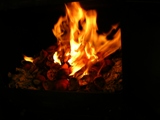
 |
 |
 |
 |
 |
 |
The ceramic enamels are a mineral dust mixture warmed up until fusion. To create enamel you have to bring together some rocks and crush them until the impalpable thing, same as the talc powder we can found in a can. Normally the finished phase required is found in the quarries of ground extraction and milling; later on we just have to go to the ceramic product distributors to be served and delivered these clean, packed and well weighted raw materials. It seems clear the difficulty we would find as “potters” to make this job by ourselves. Well over 1000 years from now the Chinese realized that plants can really make this work for us. Plants manage themselves to gather from the Earth the minerals they need to constitute themselves, to grow and make circulate the sap. Thus, each species creates its own mineral composition and therefore its specific enamels. In China these enamels, enhanced with simple and elegant forms, reached their perfection during the Song dynasty. The fact that from the weakest thing, the leftovers after the end, what remains without life by definition, appears a most colourful and unalterable precious material, has given rise in its native East to beautiful poetic creations, the same as nowadays in our context it has given rise to suggestive, spiritual and religious interpretations: “From the chaos of the Beginning of time to the divine Creation: from the dust of the ground to the moulded form; from the humble matter to the glorious resurrection; from the poor clay to the brilliant and colourful glass….”


